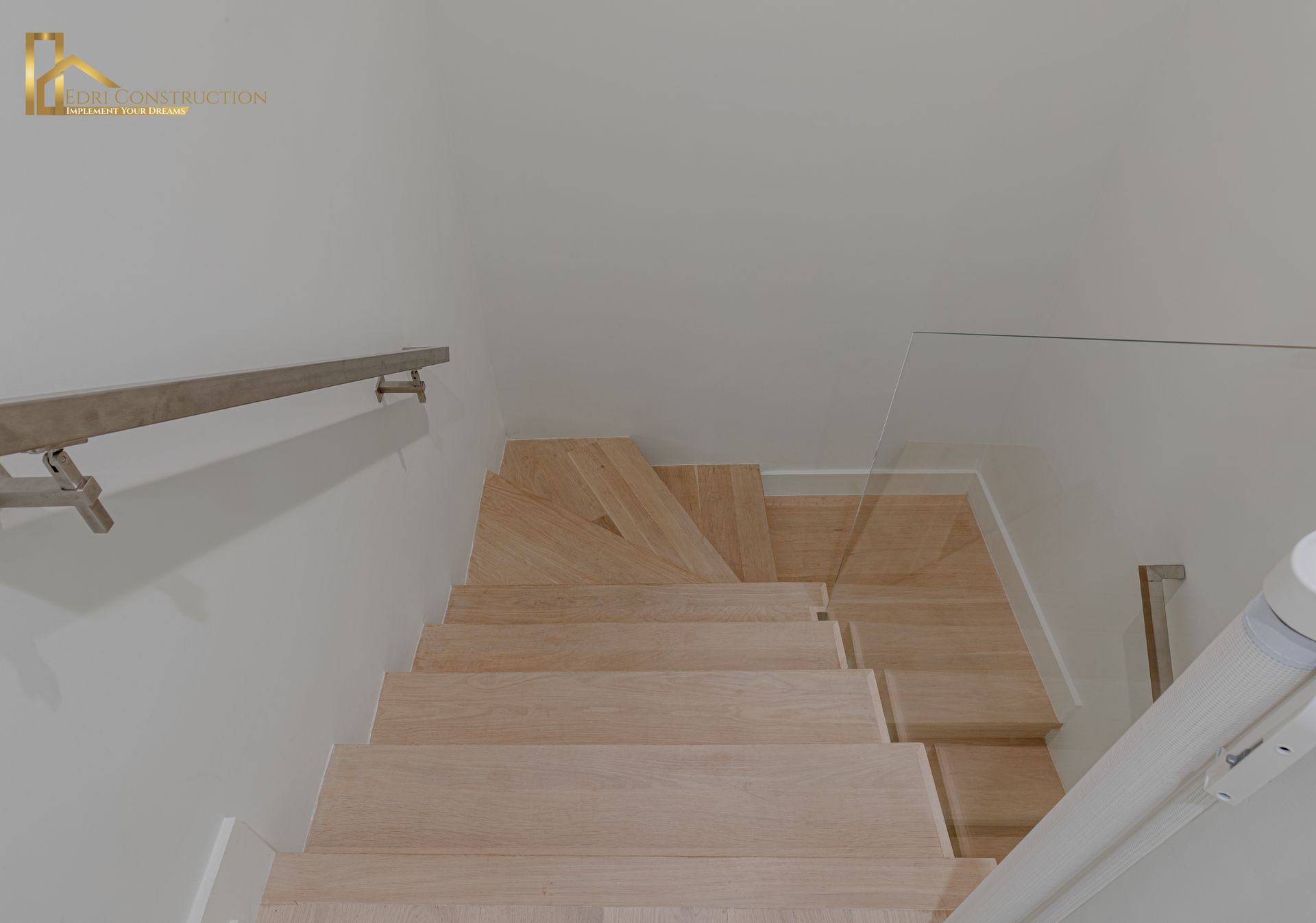How Do I Prioritize Rooms for Remodeling in My Home?

INTRODUCTION
Remodeling your home is an exciting adventure that offers the opportunity to revamp your living space, making it more functional, visually appealing, and aligned with your unique style. Yet, navigating this journey can feel daunting, especially if you're uncertain where to begin. One of the most pivotal stages in the process involves determining which rooms to focus on first. Whether your goal is to optimize functionality, boost property value, or infuse fresh energy into your home, selecting the right rooms to remodel sets the stage for a successful transformation.
The prospect of remodeling can ignite a wave of excitement as you envision the possibilities for your home. However, it's crucial to approach the project with a strategic mindset. Begin by assessing your priorities and objectives. Are you aiming to create a more efficient layout for your family's daily activities? Do you aspire to increase the resale value of your property? Or perhaps you simply crave a change of scenery to reflect your evolving tastes and preferences.
Once you've clarified your goals, evaluate each room in your home to determine its current state and potential for improvement. Consider factors such as functionality, aesthetics, and overall usage patterns. Rooms that serve as central hubs for daily activities, such as the kitchen or living room, often warrant prioritization due to their high level of use and visibility. Investing in these spaces can significantly enhance the overall functionality and appeal of your home.
Additionally, take into account any areas that may be underutilized or in need of a refresh. This could include neglected spaces like the basement, attic, or guest bedroom, which hold untapped potential for expansion or transformation. By revitalizing these overlooked areas, you can unlock valuable square footage and create new opportunities for functionality and enjoyment.
Assessing Your Needs and Goals

Before plunging headfirst into a remodeling endeavor, it's vital to pause and assess your needs and aspirations. Reflect on the way you utilize each room in your dwelling and pinpoint any challenges or opportunities for enhancement. Are there spaces that seem constricted or antiquated? Do you find yourself craving additional storage solutions or improved functionality in specific areas? By gaining a clear understanding of your requirements and objectives, you empower yourself to effectively prioritize which rooms warrant attention during the remodeling journey.
Taking a moment to evaluate your current living situation lays the groundwork for a successful renovation venture. Consider how each room serves its purpose within your daily life and whether any adjustments could enhance your overall experience. Perhaps the kitchen feels cramped and lacks sufficient counter space for meal preparation, or the bathroom's layout no longer meets the needs of your growing family. By identifying these pain points and areas for improvement, you can steer your remodeling efforts toward achieving tangible solutions that address your unique circumstances.
Furthermore, delve into the realm of possibilities by envisioning how each room could be optimized to better suit your lifestyle and preferences. Picture a spacious, well-organized pantry in the kitchen, or envision a cozy reading nook in the living room where you can unwind with a good book. By identifying these desired enhancements, you can tailor your remodeling plans to align with your vision for an ideal living environment.
Additionally, consider the long-term implications of your remodeling decisions. Are there areas of your home that require updates to improve energy efficiency or enhance resale value? By strategically prioritizing renovations in high-impact areas such as the kitchen or primary bathroom, you can maximize the return on your investment while also enjoying the immediate benefits of an upgraded living space.
Understanding Your Budget
Before delving into home remodeling endeavors, it's crucial to lay down the groundwork by setting a practical budget. Assess your financial landscape thoroughly, understanding the limits and possibilities it presents for your renovation journey. By establishing a clear budget upfront, you pave the way for informed decisions that align with your financial capabilities and aspirations.
Take the time to evaluate your financial resources and obligations, ensuring that your remodeling budget fits comfortably within your means. Consider factors such as your income, savings, and any existing debts or financial commitments. By gaining a comprehensive understanding of your financial situation, you can set a realistic budget that strikes a balance between your remodeling goals and fiscal responsibilities.
Furthermore, be mindful of the impact your budget will have on the scope and scale of your remodeling projects. Certain renovations may require a larger financial investment than others, depending on factors such as the size of the space, the extent of the work involved, and the quality of materials and finishes selected. By aligning your budget with your remodeling priorities, you can make informed decisions about which rooms to tackle first and the level of investment to allocate to each project.
As you map out your remodeling budget, don't forget to factor in contingency funds to account for unexpected expenses or changes in plans along the way. Building a buffer into your budget ensures that you're prepared to handle any unforeseen challenges that may arise during the remodeling process without compromising the quality or completion of your projects.
Prioritizing High-Traffic Areas

When determining which rooms should take precedence in your remodeling plans, it's a strategic move to begin with areas that experience the most foot traffic and usage. Typically, these are spaces like the kitchen, bathroom, and living room. These rooms serve as focal points for daily routines and interactions, exerting a considerable influence on both the practicality and market worth of your residence.
By starting with these high-traffic zones, you lay a solid foundation for your remodeling journey. The kitchen, often hailed as the heart of the home, is where meals are prepared, shared, and enjoyed, making it a natural starting point for renovations. Improving its layout, functionality, and aesthetics can enhance not only your culinary experience but also the overall ambiance and flow of your living space.
Likewise, the bathroom is a space of essential utility and personal grooming, deserving of attention and investment. Upgrading fixtures, optimizing storage, and enhancing the overall design can elevate your daily routine while also adding value and appeal to your home.
Additionally, the living room serves as a central gathering place for relaxation, entertainment, and socializing, making it another prime candidate for remodeling. Enhancing comfort, optimizing layout, and infusing style and personality into this space can transform it into a welcoming haven for family and guests alike.
Kitchen Remodeling
Renowned as the central hub of any household, the kitchen stands out as a prime candidate for remodeling endeavors. Its pivotal role in daily life renders it a focal point for renovation projects, offering a myriad of opportunities for improvement. Whether your aim is to refresh outdated appliances, optimize storage and orderliness, or cultivate an atmosphere of warmth and openness, a kitchen remodel promises substantial rewards.
Embrace the prospect of modernization by investing in state-of-the-art appliances that streamline culinary tasks and elevate efficiency. From sleek refrigerators to advanced cooking ranges, incorporating cutting-edge technology not only enhances functionality but also adds a touch of sophistication to your culinary sanctuary.
Moreover, prioritize the selection of durable countertops that marry style with resilience, enduring the rigors of daily use while exuding timeless elegance. Materials like granite, quartz, or marble not only elevate the aesthetic appeal of your kitchen but also offer unmatched durability and longevity, ensuring years of enjoyment and satisfaction.
In addition to modern appliances and resilient countertops, pay heed to the importance of ample storage solutions in optimizing the functionality of your kitchen. From spacious cabinets and drawers to innovative pantry systems and shelving units, strategic storage solutions help minimize clutter and maximize efficiency, facilitating seamless meal preparation and organization.
Bathroom Remodeling

Another area that demands immediate attention during the remodeling process is the bathroom. A meticulously crafted and modernized bathroom not only enhances comfort but also boosts the value of your property. Direct your efforts towards enhancing functionality by revamping fixtures, maximizing storage capacity, and refining the overall design appeal.
Prioritize functionality by replacing outdated fixtures with modern counterparts that offer improved efficiency and performance. Upgrading to fixtures such as water-saving toilets, energy-efficient faucets, and rainfall showerheads not only enhances convenience but also contributes to lower utility bills and eco-friendly living.
Furthermore, capitalize on available space by implementing innovative storage solutions that promote organization and clutter-free surroundings. Consider options like built-in cabinets, floating shelves, or vanity units with ample storage compartments to keep essentials neatly tucked away while maintaining a clean and streamlined aesthetic.
Elevate the ambiance of your bathroom by incorporating design elements that evoke a sense of luxury and tranquility. Features such as a spacious walk-in shower with glass enclosures, a freestanding soaking tub, or sleek and contemporary finishes can transform your bathroom into a spa-like sanctuary where you can unwind and rejuvenate after a long day.
Enhancing Curb Appeal
While focusing on interior renovations is crucial, it's equally vital to recognize the significance of exterior upgrades in elevating the overall allure and value of your home. Initiatives like refreshing siding, modernizing windows and doors, and enhancing landscaping can have a profound impact on your home's curb appeal, leaving a memorable impression on guests and prospective purchasers alike.
Amidst the excitement of interior remodeling, it's easy to overlook the exterior aspects of your home. However, neglecting the outward appearance can detract from its overall charm and marketability. By directing attention to exterior upgrades, you not only enhance the visual appeal but also bolster the value of your property.
Consider starting with the replacement or refurbishment of siding, a fundamental component of your home's exterior. Fresh, updated siding not only enhances aesthetic appeal but also serves as a protective barrier against the elements, safeguarding your home's structural integrity and longevity.
Similarly, upgrading windows and doors can yield significant benefits in terms of both aesthetics and functionality. Modern, energy-efficient windows and doors not only enhance the visual appeal of your home but also contribute to improved insulation, energy savings, and overall comfort.
Considering Future Needs

When determining which rooms to focus on during the remodeling process, it's imperative to take into account not only your current needs but also your future requirements. Anticipate potential shifts in your family dynamics and consider whether certain rooms may need adjustments to accommodate these changes. By planning ahead, you can ensure that your home remains versatile and capable of meeting your evolving needs over time.
While it's essential to address immediate concerns when remodeling, it's equally important to think ahead and consider how your household dynamics may evolve in the future. Anticipating changes such as the addition of new family members, the need for additional living space, or adjustments to accommodate aging relatives can help guide your remodeling decisions and ensure that your home remains functional and adaptable for years to come.
Take the time to envision how your family's needs may change over time and assess how different rooms in your home can be modified to accommodate these shifts. For example, if you anticipate the need for a home office or study space in the future, consider incorporating flexible design elements into existing rooms that can easily be converted into functional workspaces as needed.
Similarly, think about how aging in place may impact your home's layout and functionality. Incorporating features such as wider doorways, zero-step entryways, and accessible bathrooms into your remodeling plans can ensure that your home remains safe and comfortable for family members of all ages and mobility levels.
Hiring the Right Professionals
Regardless of the rooms you decide to renovate, securing the services of competent professionals is paramount for achieving a satisfactory outcome. When seeking out home remodeling contractors, prioritize reputable individuals or firms with a proven track record in the specific type of project you have in mind. As you navigate your selection process, consider various factors such as licensing, insurance coverage, and feedback from past clients to ensure that you make an informed decision.
Begin your search by seeking out home remodeling contractors renowned for their expertise and proficiency in the particular type of project you intend to undertake. Whether it's a kitchen overhaul, bathroom renovation, or full-house remodeling, prioritize contractors who have a demonstrated history of success in similar endeavors. This ensures that you're entrusting your project to individuals who possess the requisite skills and experience to deliver exceptional results.
In addition to expertise, verify that any contractor you consider is appropriately licensed and insured. Licensing ensures that the contractor has met certain standards of competency and professionalism, while insurance coverage provides protection against potential liabilities or accidents that may occur during the course of the project. Requesting proof of licensing and insurance gives you peace of mind knowing that you're working with a legitimate and responsible contractor.
Furthermore, take the time to research the contractor's reputation by seeking out reviews and testimonials from past clients. Online platforms, industry associations, and personal referrals are valuable sources of information that can offer insights into the contractor's reliability, professionalism, and quality of workmanship. Pay close attention to both positive and negative feedback to gain a comprehensive understanding of the contractor's strengths and potential areas for improvement.
Creating a Detailed Remodeling Plan

After determining the rooms to remodel and choosing suitable professionals, the next step is to craft a comprehensive remodeling plan. Collaborate closely with your selected contractor to delineate the project's scope, define a timeline, and establish transparent expectations. It's crucial to communicate your objectives, preferences, and financial boundaries from the outset to preempt any miscommunications or setbacks throughout the process.
Once you've identified the rooms earmarked for renovation and enlisted the expertise of qualified professionals, it's time to delve into the nitty-gritty details by crafting a meticulous remodeling plan. Work hand in hand with your chosen contractor to meticulously outline the project's parameters, including the extent of work to be undertaken, the anticipated timeline for completion, and any specific requirements or preferences you may have. By fostering open and transparent communication, you lay a solid foundation for a collaborative partnership that ensures a smooth and successful remodeling journey.
Sit down with your contractor to hash out the specifics of the remodeling project, including key milestones, deadlines, and deliverables. Establishing a clear timeline helps keep the project on track and provides a roadmap for progress, minimizing the risk of delays or disruptions along the way. Additionally, discuss any potential challenges or constraints that may impact the project's timeline and brainstorm proactive solutions to address them effectively.
Moreover, articulate your vision for the remodel and convey your aesthetic preferences, functional needs, and budgetary constraints to your contractor. By articulating your goals and expectations upfront, you empower your contractor to tailor their approach to align with your vision, ensuring that the final outcome reflects your unique tastes and requirements.
Conclusion
Prioritizing rooms for remodeling in your home is a strategic process that requires careful consideration of your needs, goals, and budget. By focusing on high-traffic areas, enhancing curb appeal, and planning for future needs, you can create a home that is both functional and aesthetically pleasing. With the right professionals and a detailed remodeling plan in place, you can embark on your home remodeling journey with confidence, knowing that you're making smart investments in the future of your home.
Frequently Asked Questions (FAQ) About Prioritizing Rooms for Remodeling
How do I determine which rooms to prioritize for remodeling?
Assess your needs and goals, considering factors such as functionality, aesthetics, and value. Focus on high-traffic areas like the kitchen, bathroom, and living room. Consider future needs and potential changes in family dynamics.
What should I consider when setting a budget for home remodeling?
Evaluate your financial situation and determine how much you can comfortably spend. Research the average costs of remodeling projects in your area. Factor in unexpected expenses and leave room for contingencies in your budget.
How can I enhance the functionality of my kitchen during a remodel?
Upgrade appliances to modern, energy-efficient models. Maximize storage space with innovative solutions like pull-out cabinets and pantry organizers. Optimize workflow and layout for efficiency and convenience.
What are some popular trends in bathroom remodeling?
Installing walk-in showers with sleek glass enclosures. Incorporating luxurious features like soaking tubs and heated floors. Choosing modern fixtures and finishes in a cohesive color palette.
How can I improve my home's curb appeal through remodeling?
Replace worn siding with durable, low-maintenance options. Upgrade windows and doors for improved energy efficiency and aesthetics. Invest in landscaping to enhance the overall appearance of your home's exterior.
What should I look for when hiring a home remodeling contractor?
Check for licensing and insurance to ensure compliance with local regulations. Read client reviews and ask for references to gauge the contractor's reputation and reliability. Request detailed project proposals and compare quotes from multiple contractors before making a decision.
How can I ensure that my remodeling project stays on schedule and within budget?
Create a detailed remodeling plan with your contractor, including a timeline and budget breakdown. Communicate openly and regularly with your contractor to address any concerns or changes. Be prepared to make decisions promptly to avoid delays in the project timeline.
What are some common challenges associated with home remodeling projects?
Unforeseen structural issues or hidden damage discovered during demolition. Delays in obtaining permits or approvals from local authorities. Coordination issues with subcontractors or suppliers that can impact the project timeline.
Are there any eco-friendly options available for home remodeling?
Choose sustainable materials like bamboo flooring or recycled glass countertops. Install energy-efficient appliances, lighting fixtures, and HVAC systems to reduce your home's carbon footprint. Consider incorporating passive design strategies to maximize natural light and ventilation.
How can I ensure that my home remodeling project adds value to my property?
Focus on improvements that align with the preferences of potential buyers in your area. Invest in upgrades with a high return on investment, such as kitchen and bathroom renovations. Maintain the architectural integrity of your home and avoid over-customization that may limit appeal to future buyers.










